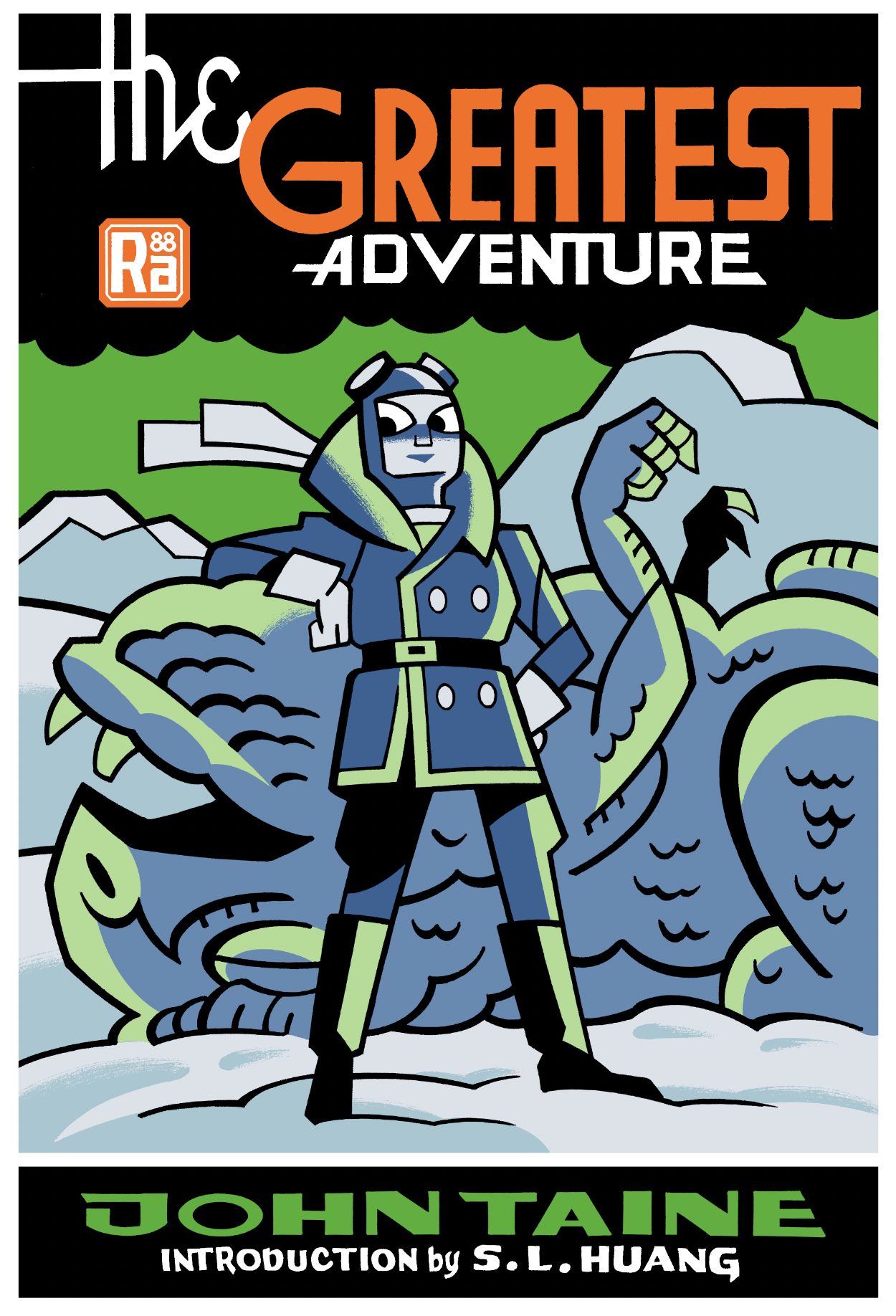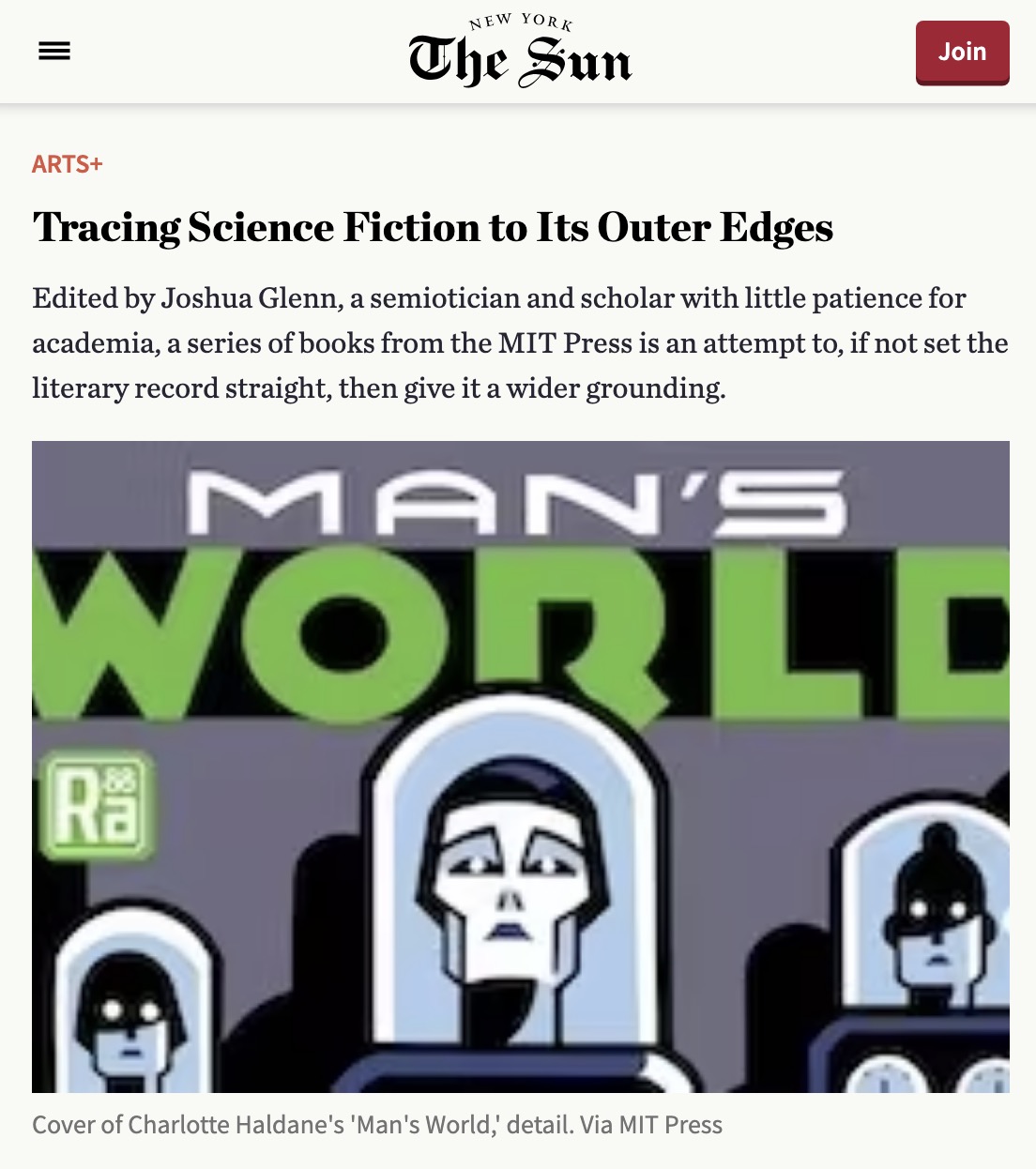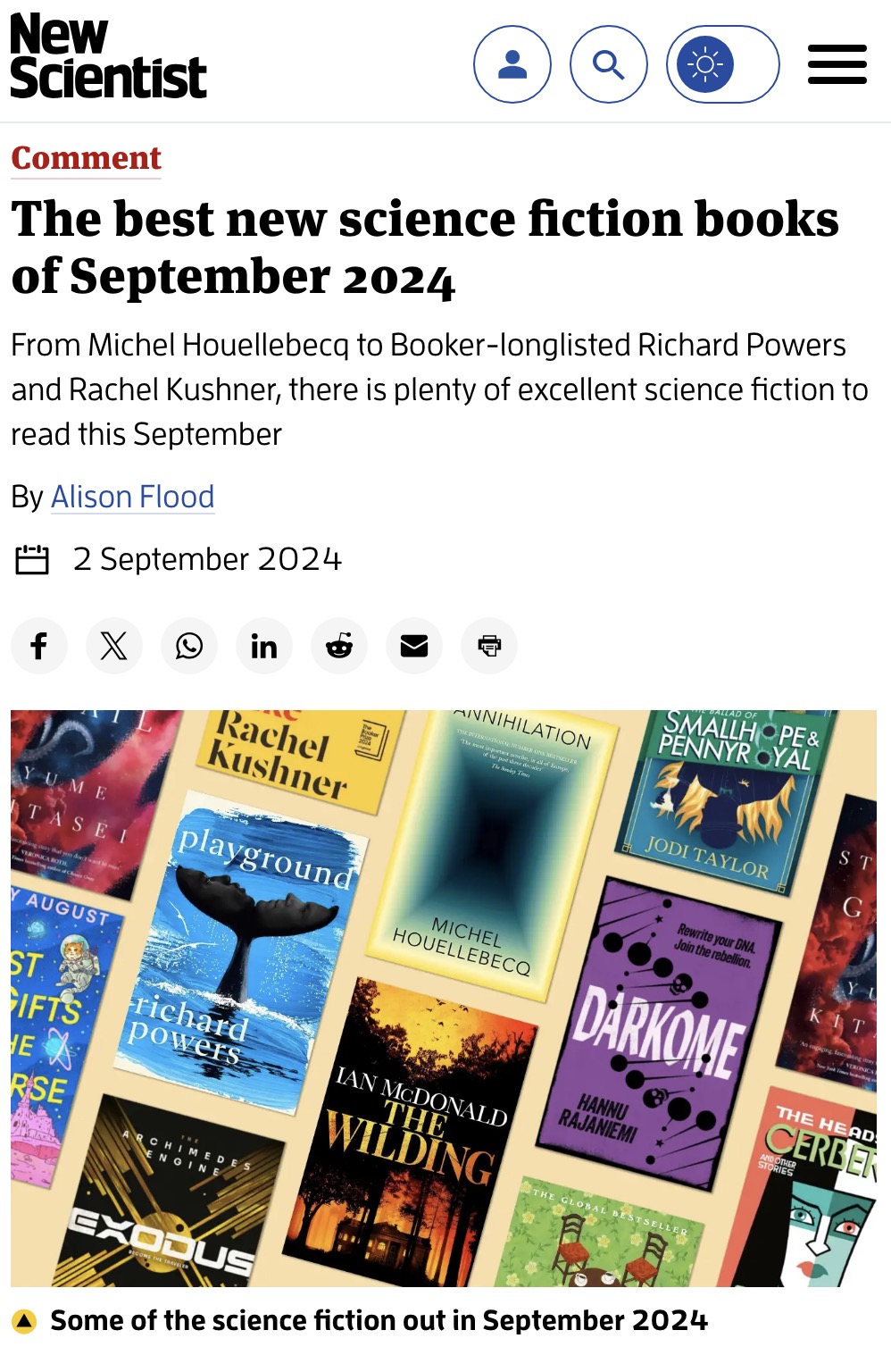RADIUM AGE 2024
By:
December 26, 2024

Under the direction of HILOBROW’s Josh Glenn, in 2022 the MIT Press launched its RADIUM AGE series of proto-sf reissues from 1900–1935.
In these forgotten classics, sf readers will discover the origins of enduring tropes like robots (berserk or benevolent), tyrannical supermen, dystopias and apocalypses, sinister telepaths, and eco-catastrophes. With new contributions by historians, science journalists, and sf authors, the RADIUM AGE book series recontextualizes the breakthroughs and biases of these proto-sf pioneers, and charts the emergence of a burgeoning literary genre.
RADIUM AGE SERIES UPDATES: 2022 | 2023 | 2024 | 1Q2025 | 2Q2025. FULL SERIES INFO.
Below, please find updates on the RADIUM AGE project from 2024.
During 2024, the RADIUM AGE series published the following titles.
A SELECTION OF BENGALI SCIENCE FICTION
Edited & and Translated by BODHISATTVA CHATTOPADHYAY
(March 12, 2024)
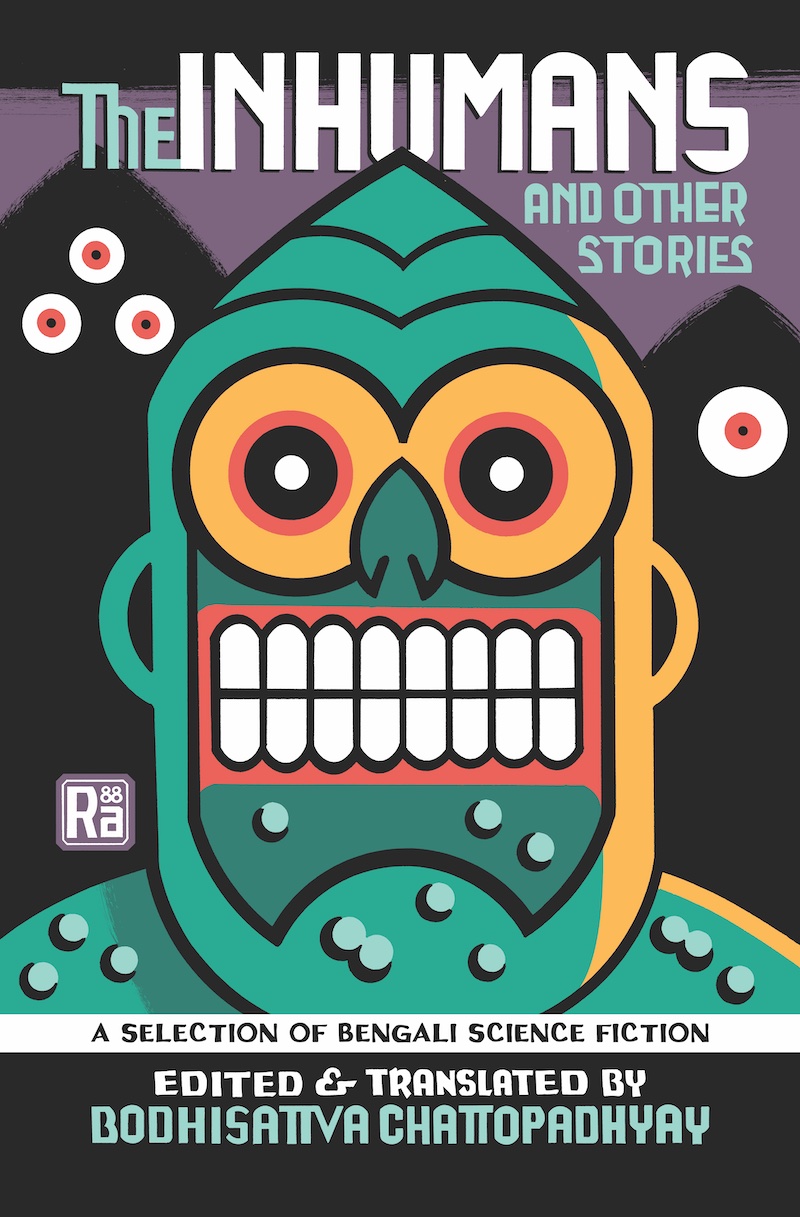
The first English translation of a cult science fiction favorite by Hemendrakumar Roy, one of the giants of early Bangla literature, and other sf stories from the colonial period in India.
Kalpavigyan — science fiction written to excite Bengali speakers about science, as well as to persuade them to evolve beyond the limitations of religion, caste, and class — became popular in the early years of the twentieth century. Translated into English for the first time, in this collection you’ll discover The Inhumans (1935), Hemendrakumar Roy’s satirical novella about a lost race of Bengali supermen in Uganda. Also included are Jagadananda Ray’s “Voyage to Venus” (1895), Nanigopal Majumdar’s “The Mystery of the Giant” (1931), and Manoranjan Bhattacharya’s “The Martian Purana” (1931).
“The Inhumans represented a genuine moment of science fiction’s arrival in interwar Bengal — a region caught up in the brutality of imperial backlash against accelerating waves of enlightened self-determination.” — Anindita Banerjee, author of Science Fiction Circuits of the South and East
“This anthology of Bengali science fiction captures the timelessness of human speculation. The stories explore and interrogate many of the same questions we have today, and Chattopadhyay’s translation perfectly evokes the language of the Radium Era.” — S. B. Divya, Hugo- and Nebula-nominated author of Machinehood
Press for The Inhumans includes the following…
“Offers a valuable peek into genre history.” — Publishers Weekly
“A welcome expansion of speculative fiction for anglophone readers.” — Words Without Borders
“Makes for a great introduction to this moment in SF history.” — Reactor (formerly Tor.com)
“Contains a number of stories never before published in English, and it looks like a fascinating read.” — Transfer Orbit
“Chattopadhyay’s collection will add to [Bengali science fiction] canon in English and is sure to appeal to fans of sci-fi and general readers alike. — Kajal Magazine
BODHISATTVA CHATTOPADHYAY is Associate Professor in Global Culture Studies at the University of Oslo. He is the leader of CoFUTURES, an international research group on contemporary futurisms headquartered in Oslo. He is a World Fantasy Award-winning editor, translatorm writer, and critic of speculative fiction, and the producer of Kalpavigyan: A Speculative Journey, the first documentary on Indian science fiction.
MANORANJAN BHATTACHARYA (1903–1939) was a fiction writer, translator, and editor who contributed extensively to children’s and young adult literature. He is particularly known for editing the magazine Ramdhanu, which served as one of the main periodicals via which Bangla SF took shape.
NANIGOPAL MAJUMDAR (1897–1938) was an Indian archaeologist and Sanskrit scholar. Known among archaeologists as NGM, he is credited with having discovered numerous Indus Valley Civilization sites.
JAGADANANDA RAY (1869–1933) was a Bengali science writer and author. His story “Voyage to Venus” (1895) was one of the earliest scientific romance stories written in Bangla.
HEMENDRAKUMAR ROY (1888–1963) is a founding figure for Bangla sf as a writer, editor, and translator. “Hemen Roy” also wrote social realist fiction and non-sf genre fiction, not to mention essays on Bengali culture, popular science, and art. Via sf, he popularized scientific and technological breakthroughs and promoted an anti-colonial vision… while criticizing the excesses of nationalist chauvinism. Roy continues to be one of the most widely read figures in Bangla literature.
Cover designed by Seth. See this book at The MIT Press.
CHARLOTTE HALDANE
Introduction by PHILIPPA LEVINE
(March 12, 2024)
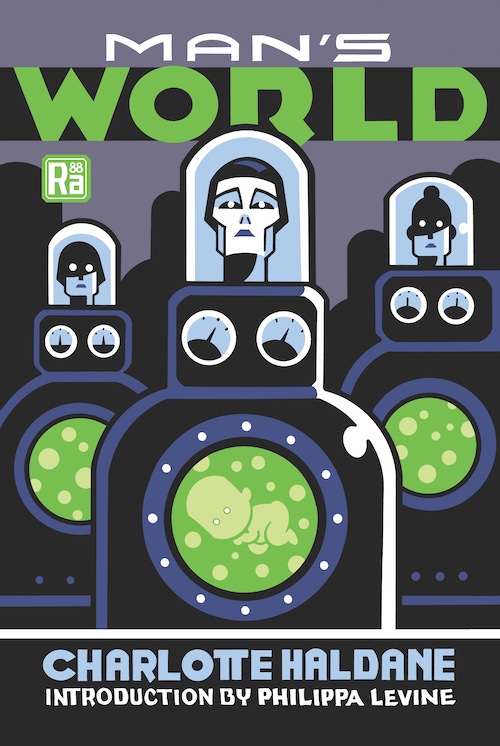
In a eugenics-driven future society, will one young woman’s defiance make a difference?
In the not-too-distant future, England’s population quality and quantity are under scientific control: Only those deemed the fittest are permitted to procreate. Women are either groomed to be “vocational mothers,” or sterilized and put to other uses. Written by an author married to one of the world’s most prominent eugenics advocates, this ambivalent adventure anticipates both Brave New World and The Handmaid’s Tale. When a young woman rebels against her conditioning, can she break free?
“A volatile admixture of feminist revelations with racially biased eugenic theorizing, nearly a century after its first publication Man’s World offers unique insight into its historical moment — and our own.” — Alexandra Minna Stern, Dean of Humanities, and Professor of English, History, and in the Institute for Society and Genetics at the University of California, Los Angeles; and founder and co-director of the Sterilization and Social Justice Lab.
Press for Man’s World includes the following…
“Haunting, complex, profound, and relevant, Man’s World is a compelling novel that forwards intriguing commentary on questions of gender, race, and social order.” — Foreword
“[Haldane’s] tale of a futuristic society haunted by eugenics remains deeply relevant nearly a century after it was first published.” — Reactor (formerly Tor.com)
“A dystopian conundrum and an alarming read.” — New York Sun
CHARLOTTE HALDANE (1894–1969) was a journalist who advocated for divorce reform and married women’s employment… while also idealizing motherhood. In 1926, the year that Man’s World was published, she married the eminent biologist J.B.S. Haldane. Her 1927 book, Motherhood and Its Enemies, made a progressive argument for easier access to contraceptives for women… while enraging feminists by arguing that only after having borne children could a woman be regarded as “normal.” She went on to found the Science News Service, and reported on WWII from the Russian Front.
PHILIPPA LEVINE is Walter Prescott Webb Chair in History and Ideas, and Director of British, Irish and Empire Studies at the University of Texas at Austin. She is the author of, among other books, Eugenics: A Very Short Introduction (2017), The British Empire: Sunrise to Sunset (3d edition, 2019), and the forthcoming The Tree of Knowledge: Science, Art and the Naked Form. With Alison Bashford, she is co-editor of The Oxford Handbook of the History of Eugenics (2010).
Cover designed by Seth. See this book at The MIT Press.
PS: HILOBROW serialized Man’s World during 2024.
EDWARD SHANKS
Introduction by PAUL MARCH-RUSSELL
(August 6, 2024)
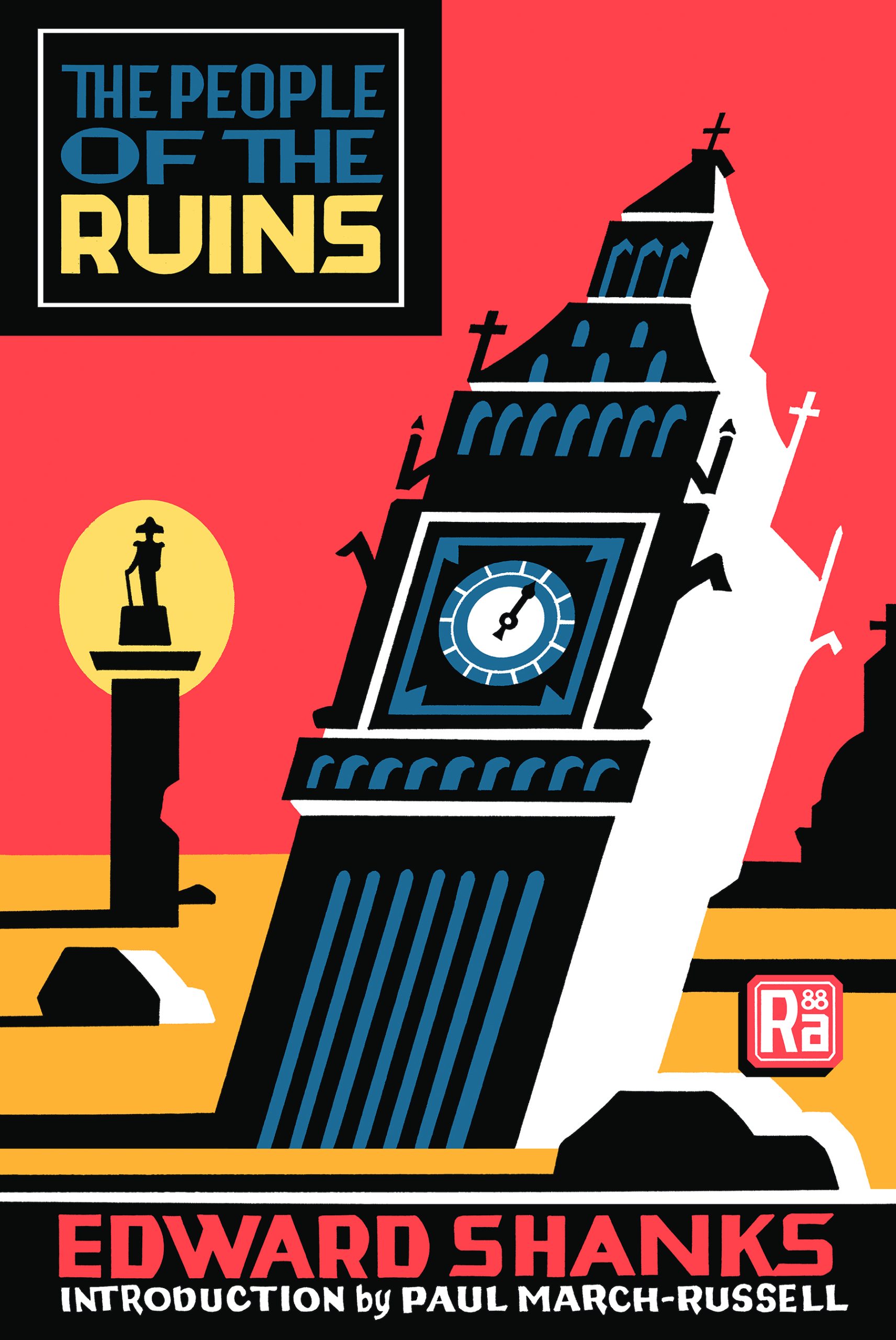
Trapped in a London laboratory during a worker uprising, a physicist and war veteran awakens 150 years later — on the eve of a new Dark Age!
In The People of the Ruins, Edward Shanks imagines England in the not-so-distant future as a neomedieval society whose inhabitants have forgotten how to build or operate machinery. Jeremy Tuft is a physics instructor and ex-artillery officer who is cryogenically frozen in his laboratory — only to emerge after a century and a half to a disquieting new era. Though at first Tuft is disconcerted by the failure of his own era’s smug doctrine of Progress, he eventually decides that he prefers the post-civilized life. But when northern English and Welsh tribes invade, Tuft must set about reinventing weapons of mass destruction.
One of the most critically acclaimed and popular post-war stories of its day, The People of the Ruins captured a feeling that was common among those who had fought and survived the War: haunted by trauma and guilt, its protagonist feels out of time and out of place, unsure of what is real or unreal. Shanks implies in this seminal work, as Paul March-Russell explains in the book’s introduction, that the political system was already corrupt before the story began, and that Bolshevism and anarchism, and the resulting civil wars, merely accelerated the world’s inevitable decline.
A satire of Wellsian techno-utopian novels, The People of the Ruins is a bold, entertaining, and moving post-apocalyptic novel contemporary readers won’t soon forget.
“An imaginative story of the future, keenly reasoned, exceptionally well told, and true to the great tradition…. At once a fine narrative novel and an inexorably logical picture of the bitter future being prepared by the advocates of class consciousness.” — The Living Age (1920)
“A penetrating tale of near-future disillusion that gazes upon a future made by World War I. Shanks, in 1920, is us, now.” — John Clute
Press for MITP’s edition of The People of the Ruins includes the following…
This new edition, complete with an introduction by Paul March-Russell, introduces new readers to Shanks’s tale of a present-day man who finds himself 150 years in the future where technology and society have regressed. — Reactor
PAUL MARCH-RUSSELL is editor of Foundation: The International Review of Science Fiction and co-founder of Gold SF, an intersectional feminist imprint published by Goldsmiths Press / MIT Press. His most recent book, co-edited with Andrew M. Butler, is Rendezvous with Arthur C. Clarke: Centenary Essays (Gylphi, 2022).
EDWARD SHANKS (1892–1953) was an English author, critic, and journalist. He was the editor of Granta just before serving in World War I and is perhaps best remembered today as a war poet. The People of the Ruins is his only science fiction novel.
Originally serialized (in Land & Water) in 1919–1920; first published in book form in 1920. Cover illustrated and designed by Seth. See this book at The MIT Press.
FRANCIS STEVENS
Edited & Introduced by LISA YASZEK
(September 17, 2024)
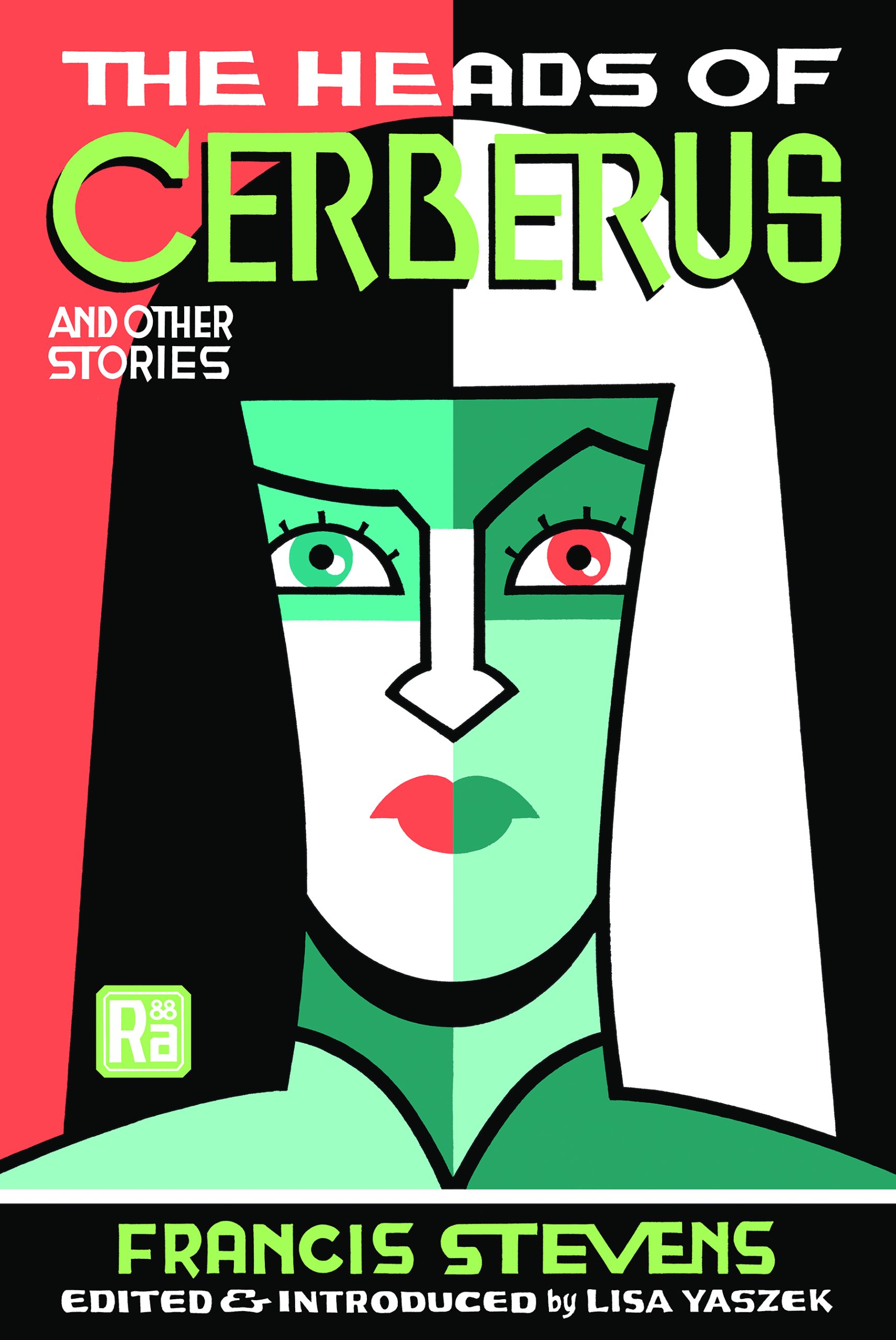
Exposed to a high-tech dust that can transport people from one dimension to another, three travelers must try to escape the totalitarian Philadelphia of 2118.
When three people in Philadelphia inhale dust developed by a scientist who has discovered parallel universes, they are transported into an interdimensional no-man’s land that is populated by supernatural beings. From there, they go on to an alternate-future version of Philadelphia — a frightening dystopian nation-state in which citizens are numbered, not named. How will they escape? In The Heads of Cerberus and Other Stories, introduced by Lisa Yaszek, you will find this world-bending story as well as five others written by Francis Stevens, the pseudonym of Gertrude Barrows Bennett, a pioneering science fiction and fantasy adventure writer from Minneapolis who made her literary debut at the precocious age of 17.
Often celebrated as “the woman who invented dark fantasy,” Bennett possessed incredible range; her groundbreaking stories — produced largely between 1904 and 1919 — suggest that she is better understood as the mother of modern genre fiction writ large. Bennett’s work has anticipated everything from the work of Philip K. Dick to Superman comics to The Hunger Games, making it as relevant now as it ever was.
“I am always delighted when I find Francis Stevens ‘booked for a thriller.’” — Reader’s letter to The Argosy (1919).
Re The Heads of Cerberus: “Those who insist on the close reasoning and the satirical wit of modern science fiction will find surprising amounts of both here.” — Damon Knight, In Search of Wonder
Re The Heads of Cerberus: “Perhaps the first science fantasy to use the alternate time-track, or parallel worlds, idea.” — Groff Conklin
“The stories in this collection are richly evocative of their time’s vision for our possible future, and their influence on the genre continues to broadly underpin the language by which contemporary works now explore today’s futures.” — Suzanne Palmer
Press for MITP’s edition of The Heads of Cerberus includes the following…
“Just my sort of thing, and I love rediscovering old sci-fi classics.” — Alison Flood, New Scientist
“An excellent way to rediscover an excellent writer.” — Transfer Orbit
In September, a version of Lisa Yaszek’s introduction, titled “The Woman Who Invented “Dark Fantasy”” How Gertrude Barrows Bennett Popularized the Fantastic,” was published by Literary Hub.
FRANCIS STEVENS (Gertrude Barrows Bennett, 1884–1948) was the first American woman to publish widely in fantasy and science fiction. Her five short stories and seven longer works of fiction, all of which appeared in pulp magazines such as Argosy, All-Story Weekly, and Weird Tales, would influence everyone from H.P Lovecraft to C.L. Moore.
LISA YASZEK is Regents’ Professor of Science Fiction Studies in the School of Literature, Media, and Communication at Georgia Tech. Her books include Sisters of Tomorrow: The First Women of Science Fiction (2016) and The Future is Female! series (2018–present). A past president of the Science Fiction Research Association, Yaszek serves as an editor for the Library of America.
Originally published 1917–1923. Cover illustrated and designed by Seth. See this book at MIT Press.
During 2024, Josh worked with the MITP editorial team to copy edit, proof, and otherwise prepare our Spring and Fall 2025 titles for publication. Here they are:
- J.D. Beresford’s The Hampdenshire Wonder (March 2025, with a new introduction by Ted Chiang). “Extravagance… but of so remarkable a character that it keeps you almost spell-bound. What follows is philosophy, psychology, poetry, allegory, what you will.” — The Bookman (1911) | See this title at the MIT Press website.
- John Taine’s The Greatest Adventure (March 2025, with a new introduction by S.L. Huang). “A mixture of H. Rider Haggard, Conan Doyle, Roy Chapman Andrews, and a bottle of excellent gin.” — California Tech (1929) | See this title at the MIT Press website.
- Marietta S. Shaginyan’s Yankees in Petrograd (August 2025, translated and introduced by Jill Roese). “A novel of our time, in which major events succeed each other with purely cinematographic speed….” — Nikolai Meshcheryakov, “Foreword to the First Edition” (1924) | See this title at the MIT Press website.
- Before Superman: Superhumans of the Radium Age (August 2025, edited and introduced by Josh). An anthology of proto-sf stories and novel excerpts exploring the uncanny (and then brand-new) concept of the “superhuman.” | See this title at the MIT Press website.
Three 2026 titles are also in the works, along with a couple of 2027 titles.
Here at HILOBROW, during 2024 Josh continued to share his Radium Age-related research. For example…
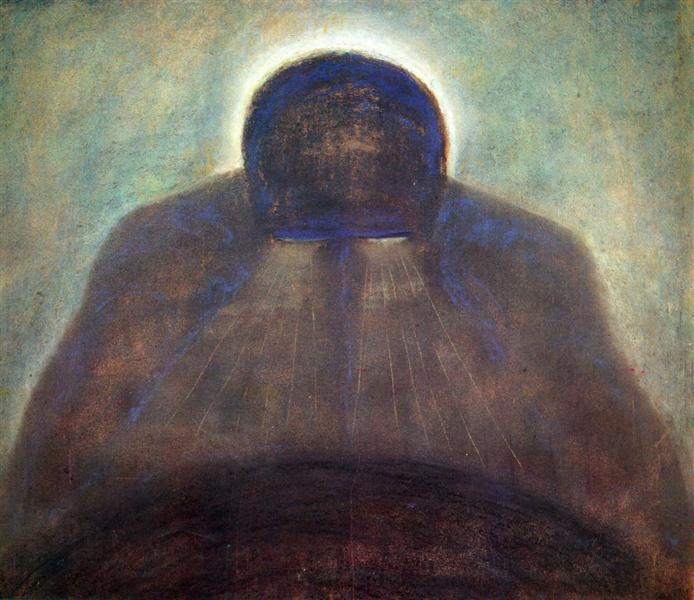
Via the series RADIUM AGE POETRY and RADIUM AGE ART, Josh shared proto-sf-adjacent poems and art works from the years 1900–1935.
Here’s the 2024 RADIUM AGE ART lineup:
1900 | 1901 | 1902 | 1903 | 1904 | 1905 | 1906 | 1907 | 1908 | 1909 | 1910 | 1911 | 1912 | 1913 | 1914 | 1915 | 1916 | 1917 | 1918 | 1919 | 1920 | 1921 | 1922 | 1923 | 1924 | 1925 | 1926 | 1927 | 1928 | 1929 | 1930 | 1931 | 1932 | 1933 | 1934 | 1935 | THEMATIC INDEX.
And here’s a sampling of the 2024 RADIUM AGE POETRY lineup:
Amy Lowell’s MIDDAY AND AFTERNOON | Kenneth Rexroth’s “HEAVEN IS FULL OF DEFINITE STARS…” | Leslie Pinckney Hill’s ARMAGEDDON | Wallace Stevens’s THE IDEA OF A COLONY | Adele Gloria’s EXPRESS TRAIN NO. 89 | Valery Bryusov’s THE DAYS SHALL COME OF FINAL DESOLATION | W.H. Auden’s GARE DU MIDI | D.H. Lawrence’s THE GULF | William Empson’s INVITATION TO JUNO | Kathleen Millay’s RELATIVITY | Aleksei Kruchenykh’s DYR BUL SHCYL | Filippo Tommaso Marinetti’s TO MY PEGASUS | Michael Roberts’ SIRIUS B | Osbert Sitwell’s THE END | Alexander Blok’s “INTO CRIMSON DARK” | J. Lewis Milligan’s THE SUPER-MAN | John Davidson’s “MATTER INCANDESCENT” | Archibald MacLeish’s SIGNATURE FOR TEMPO | Anna Akhmatova’s “ALL IS SOLD, ALL IS LOST”.
To see the RADIUM AGE POETRY archive (a work in progress), visit this page.

Here at HILOBROW, as we have been doing for a decade now, during 2024 we serialized some of Josh’s favorite Radium Age proto-sf stories and novels. Here’s the lineup:
- May Sinclair’s “Where Their Fire is Not Quenched” (1922)
- Harriet Prescott Spofford’s “The Ray of Displacement” (1903)
- Van Tassel Sutphen’s The Doomsman (1905–1906)
- Rudyard Kipling’s “Unprofessional” (1930)
- Irene Clyde’s Beatrice the Sixteenth (1909)
- Charlotte Haldane’s Man’s World (1926)
- E. and H. Heron’s “The Story of the Grey House” (1898)
- Raymond Roussel’s “The Demoiselle” (from Locus Solus, 1914); in Josh’s translation
- Joseph Conrad and Ford Madox Ford’s The Inheritors (1901)
Here’s what they’re saying about the series:
“Joshua Glenn’s admirable Radium Age series [is] devoted to early- 20th-century science fiction and fantasy.” — Michael Dirda, Washington Post | “Neglected classics of early 20th-century sci-fi in spiffily designed paperback editions.” — The Financial Times | “New editions of a host of under-discussed classics of the genre.” — Tor.com | “The best proto-science fiction novels and stories from 1900 to 1935.” — The Washington Post. | “Long live the Radium Age.” — Scott Bradfield, Los Angeles Times | “Shows that ‘proto-sf’ was being published much more widely, alongside other kinds of fiction, in a world before it emerged as a genre and became ghettoised.” — BSFA Review. | “A huge effort to help define a new era of science fiction.” — Transfer Orbit | “It’s an attractive crusade. […] Glenn’s project is well suited to providing an organizing principle for an SF reprint line, to the point where I’m a little surprised that I can’t think of other similarly high-profile examples of reprint-as-critical-advocacy. ” — The Los Angeles Review of Books | “An excellent start at showcasing the strange wonders offered by the Radium Age.” — Maximum Shelf

During 2024, the Radium Age series received some nice attention. We were particularly gratified to read Bodhisattva Chattopadhyay’s response to a question about the series in an interview with the sf magazine Strange Horizons:
The Radium Age is a fantastic project, and I am so glad that The Inhumans is part of the series. I am really quite fond of early science fiction, but I don’t see these works as dated or old, especially when it comes to their relevance. The themes that we find in late 19th and early 20th century science fiction are also the themes of the here and now. Take something like Everett Bleiler’s two fantastic bibliographic studies, Science Fiction: The Early Years, and Science Fiction: The Gernsback Years. Now if you look at Bleiler’s classification of the themes, whether those are outer space adventures or genetic engineering, advanced weapons or robotics, you find it all already in science fiction of the period. We often talk about the “predictive quality” of science fiction, and even if science fiction writers do not necessarily set out to be predictive, the genre has often been remarkably prescient when it comes to technological futurism and epistemological futurism, two concepts that I developed to talk about science fiction’s speculative drive: that is imagining future technological change as well as the change in the underlying knowledge structures driving technological change. Resources like Technovelgy have been documenting things such as this for a while. So there’s one excellent reason to dive into early science fiction in any case.
But what makes the early period more fascinating is not just this kind of prescience, but the way it deals with the embeddedness of the technological in the social, and the social impact of change itself. And all this is written beautifully, and simply — in the mix of genres that does not privilege one register or style of storytelling over another, where making the story intelligible is paramount. Because these stories are a way of sensemaking during a senseless time. The Radium Age is a crazy period, because these technological changes and discoveries are happening at a time of incredible social upheaval. War – and the threat of nuclear war — leading to total annihilation of humanity is the mood. Science fiction captures this devastation, this dystopia, this pessimism, while offering a refreshing possibility of change. Hence the Radium Age books.
We are now living in the same times — if anything somewhat worse. We are 90 seconds to midnight, and we have never been closer. Governments are going back on war footings. Identities that had been ostensibly and forcibly contained within nation state boundaries are showing their embeddedness in intra- and trans-national units. Democratic backsliding defines the politics of our present. And to add to these is climate change, which will get us all. And again people are turning to science fiction, for both the image of despair and the possibility of transformation. This is happening globally, because science fiction — by whatever name we choose to call it — has always been global.
So if we look at the volumes in the Radium Age series, we quickly see how relevant these books are, and continue to be. There’s dystopia, there’s totalitarianism, there’s nuclear war, there’s population control, there’s violent nationalism. But there’s also love, and resistance, and hope and humor. So we are very much in the same space as these books now in our present. And these books, if anything, often tell us more about where we are now in our current societal development compared to contemporary science fiction, which tries to imagine our far tomorrows. The Inhumans definitely tells us something about colonial Bengal and India, but it is also very much a book of the now. I think there are so many things we are yet to understand about early science fiction.
Bodhisattva was being interviewed about The Inhumans and Other Stories (2024), a collection of stories that he selected and translated from Bangla.
Bodhisattva was also interviewed by interviewed about the collection by Clarkesworld. Excerpt: “I think what might surprise readers of the book is how closely connected SF literary cultures were in the early twentieth century. While the works have distinct Bengali characteristics, as well as Indian mythological references, influences from Anglophone SF, and Anglophone adventure literature are omnipresent.” And he was interviewed by Paul Semel; and he was interviewed by Miranda Melcher for her New Books Network podcast.
In addition to the interviews listed above, here’s a sampling of 2024 RADIUM AGE series publicity:
- Publishers Weekly reviewed The Inhumans: “A valuable peek into genre history.”
- Foreword reviewed Man’s World: “Haunting, complex, profound, and relevant, Man’s World is a compelling novel that forwards intriguing commentary on questions of gender, race, and social order.”
- Tobias Carroll of Words Without Borders reviewed The Inhumans: “Includes the first-ever English translation of Hemendra Kumar Roy’s title story, along with several other works of Bangla speculative fiction from the first half of the twentieth century (and, in one case, even earlier) — all of which should make for a welcome expansion of speculative fiction for anglophone readers.”
- Reactor (formerly Tor.com) included The Inhumans in its round-up of “Can’t Miss Indie Press Speculative Fiction for March and April 2024.” Excerpt: “How’s your knowledge of Bengali science fiction from the first half of the 20th century? If your answer to that is, ‘Not comprehensive, unfortunately,’ don’t worry; editor and translator Bodhisattva Chattopadhyay is behind a new collection that makes for a great introduction to this moment in SF history. The centerpiece of The Inhumans and Other Stories: A Selection of Bengali Science Fiction is the title novella by Hemendrakumar Roy — but there’s more to be found within these covers, including voyages across the solar system.”
- Reactor also included Man’s World in the same round-up. Excerpt: “The biography of Charlotte Haldane — anti-fascist journalist, cohort of Paul Robeson, and feminist activist — would make for a fascinating read on its own. That shouldn’t minimize her fiction, however: her 1926 novel Man’s World is getting a new edition in March, and its tale of a futuristic society haunted by eugenics remains deeply relevant nearly a century after it was first published.”
- Josh was interviewed about the series on the NPR (KPCW) show COOL SCIENCE RADIO. The episode aired on April 4th.
- The conservative newspaper New York Sun published a story on the series. Excerpt: “Edited by Joshua Glenn, a semiotician and scholar with little patience for academia, a series of books from the MIT Press is an attempt to, if not set the literary record straight, then give it a wider grounding.” Also: “The cover designs for the series are the work of Gregory Gallant, better known as Seth. His illustrations achieve an eye-grabbing balance between the futuristic and the retro.” About The Inhumans: “Mr. Chattopadhyay divines anti-colonialist sentiment within Roy’s satirical take on the strictures of civilization.” About Man’s World: “A dystopian conundrum and an alarming read.”
- Writing for Locus (the March issue), Niall Harrison had the following to say about our translation of The Inhumans. “For about 15 years now, Joshua Glenn has been banging the drum for the historical and literary value of ‘proto-SF’ published between roughly 1900 and 1935. […] The historical parallax provided by a book such as The Inhumans is, for me, where the full potential of the [Radium Age] project shines through.”
- “By presenting four pieces originally written in Bangla and here translated into English for the first time, the book demonstrates that the Radium Age was a truly global phenomenon.” | “For a book so full of experiments gone wrong, the inclusion of The Inhumans and Other Stories in the Radium Age series feels utterly right.” — Strange Horizons
- “A brilliant series…. The books feature new introductions, text unfettered by notes, and striking cover art by Canadian cartoonist Seth, featuring a strong variety of works, including female and under-represented authors of color.” — Ancillary Review of Books
- The scientific journal Nature Physics reviewed The Inhumans and Other Stories. Excerpt: “Each story bursts with futuristic ideas and offers a glimpse of the excellence of Bengali literature. […] Readers who don’t speak Bengali will thoroughly enjoy this translation. It provides a rich mixture of storytelling and cultural diversity, all with a sci-fi twist. This collection isn’t just about bringing Bengali literature to an international readership — it is a chance to dive into imaginative stories from a different perspective. Whether one loves sci-fi or simply enjoys a good story, this anthology offers a rewarding read that crosses linguistic barriers.”
- Tor.com’s Reactor included The People of the Ruins on their list of Can’t Miss Indie Press Speculative Fiction for July and August 2024. Excerpt: “This new edition, complete with an introduction by Paul March-Russell, introduces new readers to Shanks’s tale of a present-day man who finds himself 150 years in the future where technology and society have regressed.”
- Miranda Melcher at the New Books Network interviewed Paul March-Russell about our new edition of The People of the Ruins.
- “Just my sort of thing, and I love rediscovering old sci-fi classics.” — Alison Flood, writing about Francis Stevens’ The Heads of Cerberus collection in the September issue of the scientific journal New Scientist. Article titled “The best new science fiction books of September 2024.”
- “An excellent way to rediscover an excellent writer.” — Transfer Orbit, on The Heads of Cerberus collection
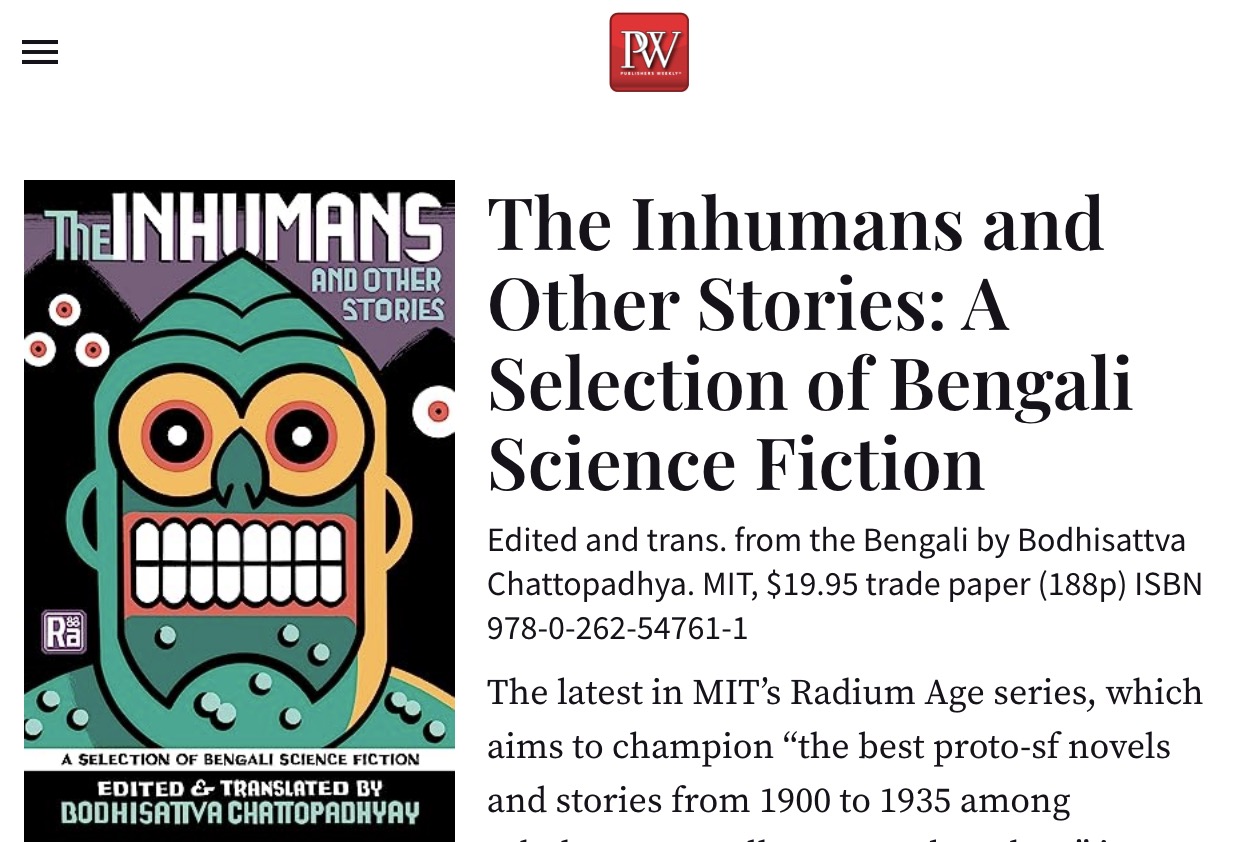
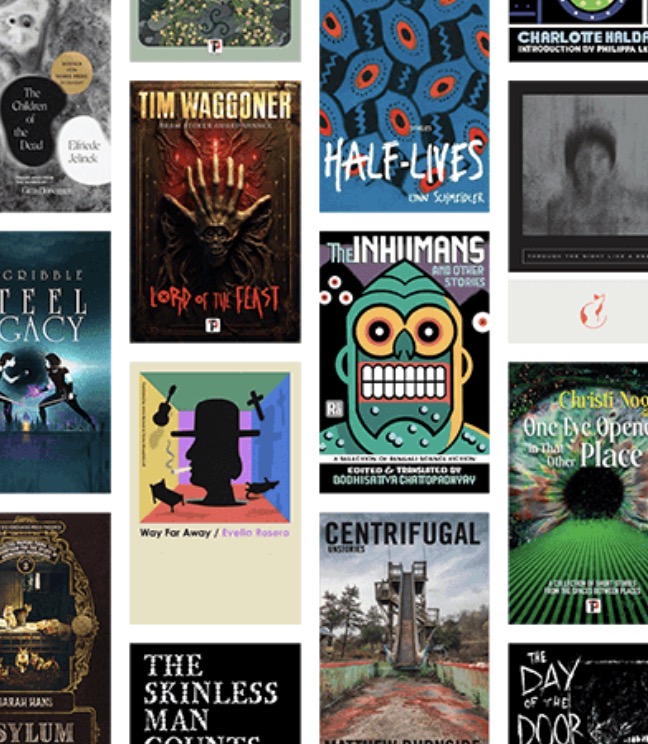
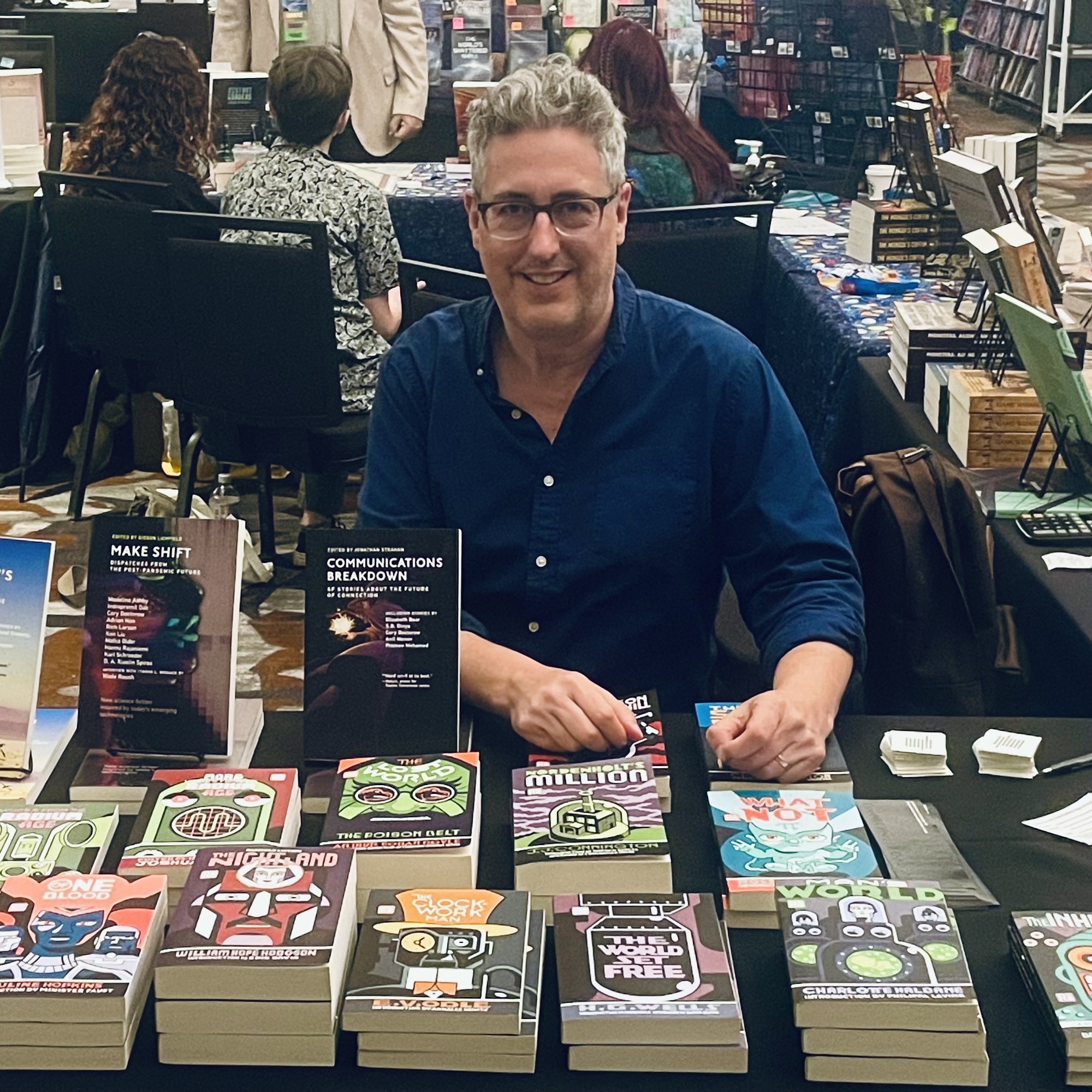
& more.
MORE RADIUM AGE SCI FI ON HILOBROW: RADIUM AGE SERIES from THE MIT PRESS: In-depth info on each book in the series; a sneak peek at what’s coming in the months ahead; the secret identity of the series’ advisory panel; and more. | RADIUM AGE: TIMELINE: Notes on proto-sf publications and related events from 1900–1935. | RADIUM AGE POETRY: Proto-sf and science-related poetry from 1900–1935. | RADIUM AGE 100: A list (now somewhat outdated) of Josh’s 100 favorite proto-sf novels from the genre’s emergent Radium Age | SISTERS OF THE RADIUM AGE: A resource compiled by Lisa Yaszek.

